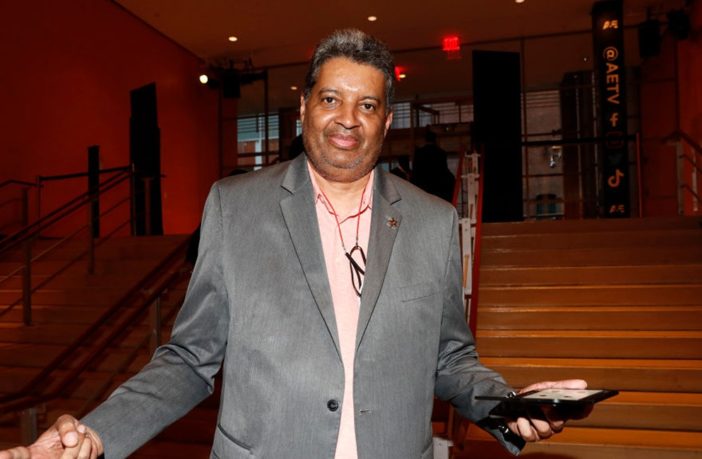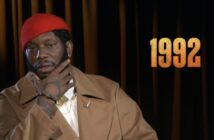Since hip hop was birthed in the Bronx, New York during the 1970s, Rocky Bucano has been an eyewitness to the culture’s growth and development. He started as a teenage DJ, spinning under the moniker of Kool DJ Rock of the Come Off Crew. After being an in-demand DJ throughout the region, he went on to become one of New York City’s most in-demand party promoters curating events for Hip Hop legends such as DJ Hollywood, Grandmaster Flowers, Kool DJ Dee, Eddie Cheeba, Maboya, and Grandmaster Flash.
In 1987, Bucano became president of StrongCity Records working with Hip Hop pioneer DJ Jazzy Jay where he helped guide the careers of Grand Puba, Don Barron, Diamond D, Teddy Riley, and many more. He became the Executive Vice President of Dallas Austin’s Rowdy Records before becoming general manager of Teddy Riley’s New Jack Swing Productions, where he oversaw the marketing of the group multi-platinum R&B group Blackstreet.
Currently, Bucano is the President and Chairman of the Board of the Universal Hip Hop Museum, where his life’s work is to preserve the culture that he loves so much.
EBONY spoke with Rocky Bucano about, his remarkable career in the industry, the 50th anniversary of Hip Hop, and the highly-anticipated opening of the Universal Hip-Hop Museum.
EBONY: What was your first memory of Hip Hop?
Rocky Bucano: I would say it was 1973 which was my first year in high school and I went to a DJ Kool Herc party at a community center. That was the first time that I saw Kool Herc play music and my first time seeing the B-boys going off.
As a DJ in the early days of rap music, how did records get airplay when many Black stations were so anti-rap?
You had to go through Frankie Crocker. He was a good friend of mine, and he was the maestro of the airwaves. Back in the 70s and 80s before Hip Hop was even allowed to be played on the radio, he was probably the biggest name in radio at that time. He would introduce all the new artists, but at that time Disco was king. So acts like Donna Summer, Giorgio Moroder, McFadden and Whitehead would get Frankie Crocker to break their records. He was against Hip Hop in the beginning, but he was one of the first guys to break the Sugar Hill Gang’s ‘Rapper’s Delight.” Shortly thereafter, he gave John “Mr. Magic” Rivas his big break on WBLS, despite not loving Hip Hop music at all.
Later on in your career as a music executive, you worked with Dallas Austin and Teddy Riely as they both were on their way to becoming superproducers. How was it to watch them rise as legends in music?
I was there when Dalla Austin first signed Monica to his label, Rowdy Records. I also worked with Teddy Riley at a very young age. He would play piano for his future brother-in-law Omar Chandler at the Apollo on “Amateur Night” and my friend Milton Lacroix saw him at one of the shows because he used to manage Omar. He came to me one night at a club in Midtown, and said, “Rocky, you got to see this guy. This kid is playing the piano and he’s a genius man. He plays the piano like you won’t believe, and he’s not even old enough to get in a club.” Later on, I worked with Teddy as the manager for his company, LOR Entertainment, down in Virginia Beach and New Jack Swing productions. During that time, he was working with everybody from Bobby Brown to Patti LaBelle to Michael Jackson.
Establishing a museum is a large undertaking, and you are more than qualified for the task. When did you get the idea to start the Universal Hip Hop Museum?
Kurtis Blow and I would go around to different meetings, trying to pitch the idea to local elected officials and people in the music industry. It took us about another three or four years to get some traction. We bought in Michael Ford, an architect from Detroit, Michigan, to join us in the journey and that’s when the project started to accelerate because Ford was able to add his visual architectural skills to our vision instead of having just words and information on paper. We were able to start showing people what the future museum would look like, and that’s what started to make the project become believable in the eyes of many people. The building is slated to be completed In 2024. It’s going to be one of the most innovative museums in the entire world thanks to our partnership with Microsoft, who’s our official technology partner.
How does it feel to have that outpouring of support for the museum after doing so much groundwork?
We’ve been blessed and fortunate to have the support of our local elected officials. Mayor Eric Adams, the new Bronx borough president Vanessa Gibson, the city council here in New York City, the New York State Assembly, Governor Kathy Hochul, and our state senators. But never in my wildest dreams did I think that we would get support at the federal level from two of New York’s top senators, Majority Leader Senator Chuck Schumer and Senator Joe Brant, as well as Congressman Jamaal Bowman. Their support demonstrates that this project means so much to New York City and New York State and the local economy. Their investment will help us complete the construction, to continue to develop our educational programs, and expand the curriculum that will be used to uplift the youth who live in our communities. It truly speaks volumes about what the museum means to so many people.
Lastly, what do you want visitors to leave with after visiting the museum as we celebrate 50 years of Hip Hop?
So many people think that Hip Hop is just rap music. Hip Hop is a living, breathing culture. It’s a lifestyle for so many people live around the world. What I hope people will get when they come to visit and experience the museum is to have a complete understanding of what the genre is, the people who started, how it started, where it started, and more importantly, be better informed. From politics to advancing entrepreneurship in Black and Brown communities, it has allowed teenagers and young people to become billionaires and helped inspire Barack Obama to become the first Black President of the United States. Hip Hop has an opportunity to use its influence to create social change in communities that are experiencing a lack of unity, economic inequality, gun violence, and other issues. Hip Hop can be that engine to help correct some of today’s social ills, whether it’s here in the United States or anywhere else in the world. That’s what I want people who visit the museum to leave with.



